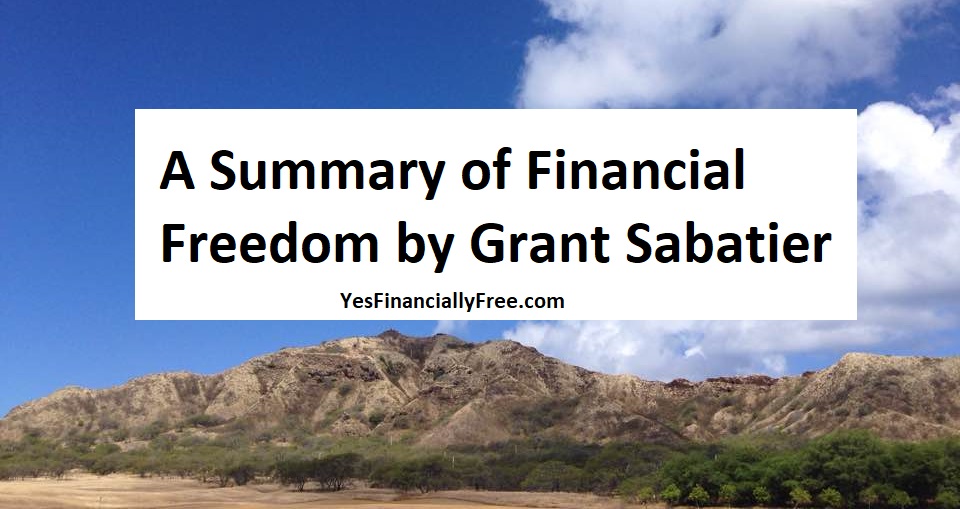
A Summary of Financial Freedom by Grant Sabatier
In this blog I’m going to give you A Summary of Financial Freedom by Grant Sabatier.
Grant was a Millennial, who got a full time job right out of College, and then was laid off after 6 months with $12,000 of credit card debt. He bounced between jobs for 2 years and then when he lost his job again during the Great Recession of 2010, he moved in with his parents. He had $2.26. He realized he had to find a better way of living.
He started studying how to become financially free and learned how to save enough in stocks to live off of 4% annual withdrawals.
He became financially free by 2015 with 1 million dollars in savings.
His book teaches you how to save up enough in stocks so that you can retire early.
How to Find Your Number For Financial Freedom
Figure out how much money you need a year to live.
In his example he used $50,000.
With that number, you calculate how much you would need to save to pull out 4% a year.
.04 x Your Number = $50,000
$50,000 / .04 = $1,250,000
or written another way: $50,000 x 25x – $1,250,000
So he suggests you find your financial freedom number, so you have clarity on how much you need to save in investments in stock index funds to become financially free.
He then discusses how he didn’t actually save $1,000,000 to grow his stock account to $1,000,000. Every year he invested the stock market also grew in value (lucky for him it was a bull market, and it wasn’t 2022). So he saved more like $500,000 and it grew to $1,000,000 over the 5 years he was investing.
A Path to Financial Freedom
He says that for him Financial Freedom isn’t about money, but actually about peace. He has a passage where he’s enjoying his dream life in Castel Fragsburg, tucked in the Dolomites of Northern Italy. When he didn’t have money all he thought about was money. Now that he has money, he doesn’t think about it anymore.
He says you can have this freedom too if you have a decent middle-class income and live in a place with a reasonable cost of living and you can save 40% – 50% of your income. He acknowledges that he is an outlier, as he started in 2010 and all he did was work. He also lived in a place with a lower cost of living.
A lot of the book discusses the rationale behind investing in stock market index funds and not individual stocks. It also talks about the returns that can be expected over years of compounding.
In addition, he offers many stories of others who have followed his path, and decided to live modestly to save money and put it in their investment accounts. Examples are house-sitting to not pay rent, renting a room instead of a whole apartment, doing several side hustles, moving to a cheaper city, and tracking your spending to eliminate expensive habits like coffee drinking or going out to bars.
9 Tips to Help you Find an Amazing Investment Property
He recommends real estate as a good investment. Of course, this was written before the federal government forced land lords to keep tenants even if they weren’t paying rent during the 2020 COVID lockdown. It is important to understand that real estate has gotten a lot riskier as well as local governments are putting more laws in place to restrict land owner rights.
1. Develop real estate investing criteria to follow.
2. Set a Budget and gt preapproved for a mortgage or loan
3. Look for properties that generate immediate positive cash flow and have high rent and appreciation potential
4. Find an amaing Realtor who does the hard work for you
5. Hunt when everyone else isn’t
6. Look for foreclosures or short sales
7. Test-drive the neighborhood
8. Find an experienced home inspector
9. Be prepared to walk away from a deal
Seven Levels of Financial Freedom from p. 313-314
1. Clarity, when you figure out where you are and where you want to go
2. Self-sufficiency, when you earn enough money to cover your expenses on your own
3. Breathing room, when you escape living paycheck to paycheck
4. Stability, when you have six months of living expenses saved and bad debt, like credit card debt, repaid
5. Flexibility, when you have at least two years of living expenses invested
6. Financial Independence, when you can live off the income generated by your investments forever so work becomes optional
7. Abundant wealth, when you have more monty than you’ll ever need